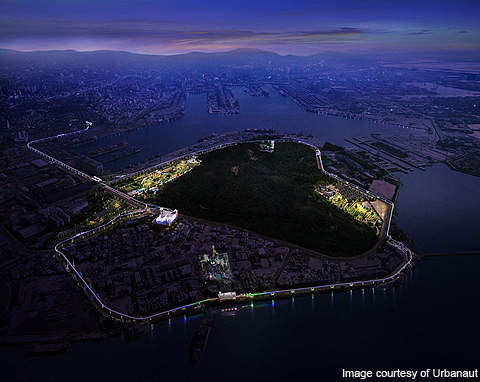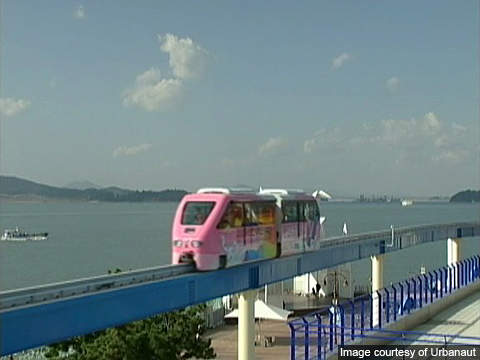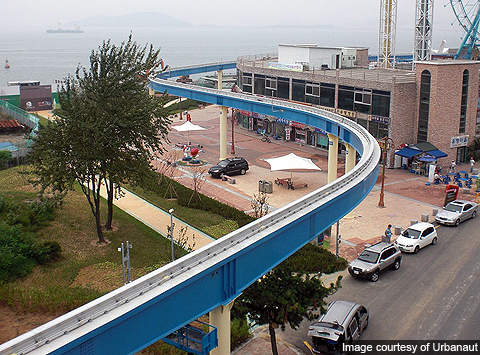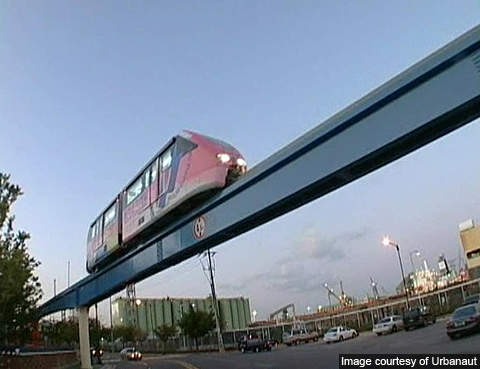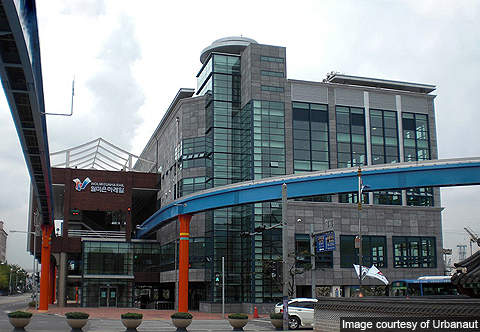Wolmido Monorail project intends to connect Wolmido Park, a tourist destination, with the main island at Incheon station via a 6.3km long guideway operated by fully automatic monorails, based on Urbanaut technology.
Urbanaut technology was developed by Einar Svensson, an ex-engineer of Alweg Company. The system is the first in South Korea to use Urbanaut technology.
The $65m project broke ground in July 2008 and was scheduled to start operations in 2009 but delayed repeatedly. During trial operations in 2010, a wheel loosened from the train and injured a woman passing below.
The project was put on hold following the incident. A full-scale investigation was later launched that found the monorail unsafe to operate. Plans to completely remove the monorail have been proposed. Authorities, however, are trying to salvage the project by taking precautions and incorporating safety systems.
Hanshin is the main civil works contractor of the project. The monorail train is manufactured by Rowin.
Monorail infrastructure
The project features 10 stations numbered from 101 to 110. Stations 102 to 105 form a circular loop at Wolmido Park and stations 101, 106, 107, 108, 109 and 110 form another circular loop at Incheon city. The circular loops are built on a single guideway.
Dual guide ways have been built between the two circular loops from stations 101 and 102. They run along the freeway at 20m height. The adjacent sections of the dual guideways are sloped at an angle of 6°-7°.
The guideways are constructed off street to avoid any traffic interference. A transparent screen surface between the dual guide ways serves as an emergency walk way.
The section between the Wolmido waterfront and the public boulevard has a long-span and elevated Y-shaped columns, designed and patented by Urbanaut.
The foundation piles are laid at a distance of 45m (150ft) each, more than double the distance when compared to any other monorail foundations.
Transport links
The stations are situated close to public parking places and integrated with other transit modes such as buses and light rail to provide efficient access between the Wolmido Island and the main city. They are built at height to form a bridge above the streets and street intersections to avoid traffic interference. They can be accessed by stairs or elevators. They are placed at every 0.6km distance.
Although the stations are small in size, they are modern and in sync with the surroundings. They are aesthetically designed with a provision for future expansion. Most of the stations are of dual-function and connected to the buildings with many other facilities.
Rolling stock
The initial fleet will consist of two-car trains and will be expanded to three or four car trains depending upon the passenger traffic.
A two-car train is 17.4m long. It has a maximum nominal load for 36 seated and 48 standing passengers. It can carry 4,360 passengers an hour at headway of 90 seconds. The maximum crush load is for 36 seating and 61 standing passengers.
The rubber tires can run on the concrete runway with traction ability even on slopes of up to 12°. The potential speed of the Urbanaut monorail depends on the distance between two stops.
Wolmido construction
Foundation laying was a challenging task due to the presence of a high water table. Piles were inserted 30m deep in the water to the bed rock. The above ground structure is made of concrete and is supported by pile cap foundations. Long-spanned elevated Y–shaped structures were used in the construction of guideways to avoid more use of expensive foundations while also synchronising the aesthetic look of the columns with the surroundings.
Circular columns are made with steel and poured with concrete and placed on top of foundations. They are 20m tall and have been designed and engineered by Urbanaut. The circular prefabricated cages were made near the project site and transported to each support point.
The single guideway super structure is also built on prefabricated and concrete poured columns. The beam section on top of the columns is U-shaped. It is made of concrete and serves as a runway for vehicles.

